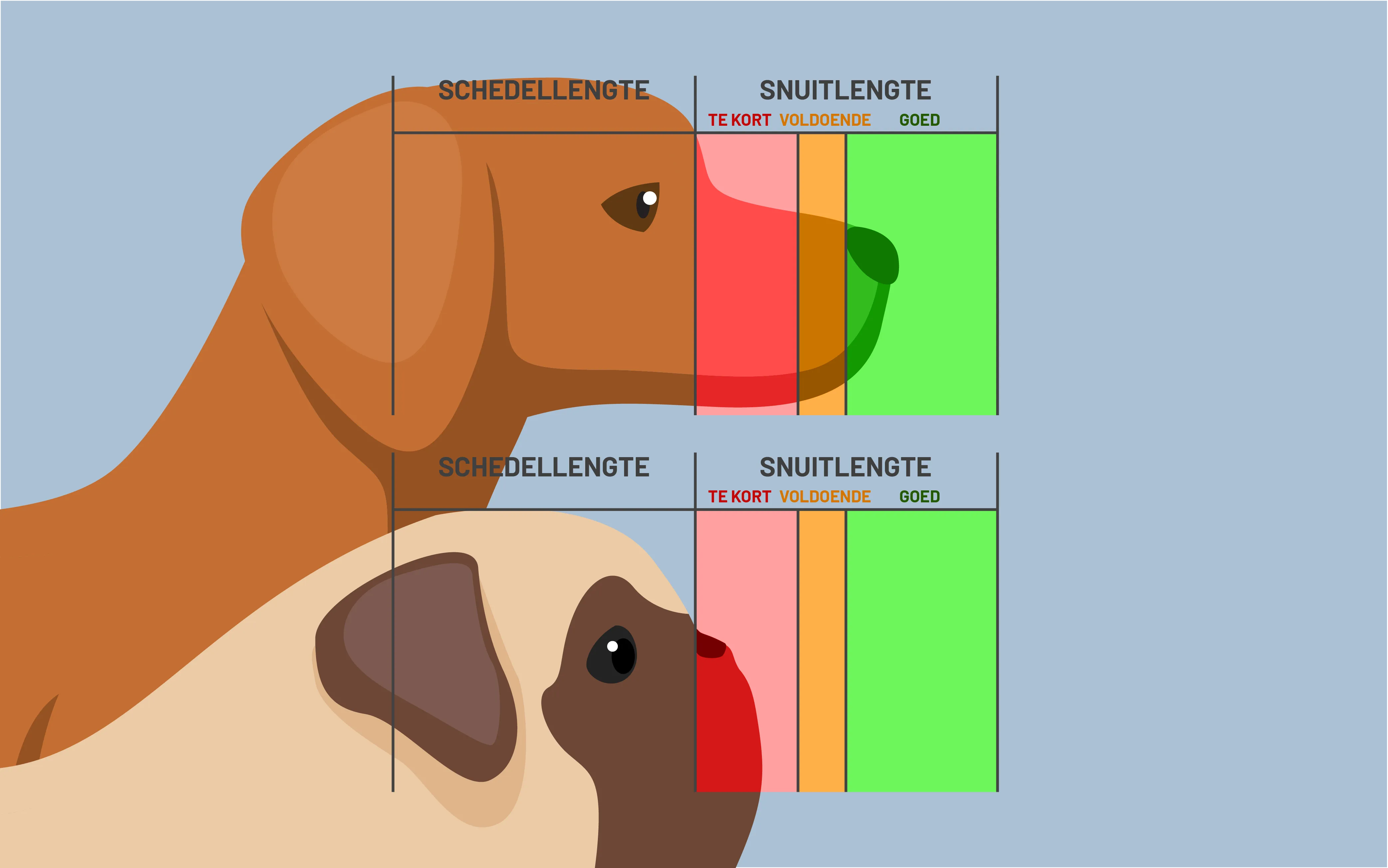There are several points where brachycephalic dogs differ from other dogs. We address, if necessary, the brachycephalic obstructive syndrome (BOS operation), eye problems (entropion, cherry-eye, keratitis sicca), and skin problems (screw tail, inflamed skin folds). With our love and expertise in treating and anesthetizing brachycephalic breeds, your brachycephalic dog is in good hands with us.
Breeds such as Pugs, French Bulldogs, and English Bulldogs, as well as Pekingese, Boxers, Shih Tzus, Boston Terriers, Cavalier King Charles Spaniels, Bordeaux Dogs, Miniature Pomeranian , and Chihuahuas, belong to the brachycephalic category. In our clinic, we adore these short-nosed breeds. Many of our patients belong to the aforementioned breeds, each with their own charming personalities and peculiarities. For instance, the ever-jolly French Bulldog, or the tiny Chihuahua as brave as a German Shepherd. The playful Boxer and the sweet King Charles. However, it’s often the case that these breeds have breed-specific conditions, which can be well or sometimes less well treated. For example, snoring is common among brachycephalic breeds, and even though you may have heard it’s a breed characteristic, it’s a sign of obstructed breathing. Also, many people are unaware that unpleasant eye inflammations can occur because the eyeball protrudes too far from the socket and has a less sensitive cornea than dogs with a longer snout, or because the hairs of a facial fold can irritate the eye. Moreover, painful skin inflammations can develop in the skin folds around the nose or tail (especially in Bulldogs) if you don’t know how to keep these folds clean. Additionally, the ear canal can be very narrow, leading to ear infections. Dental problems are more common because the molars overlap due to lack of space in the mouth, making dental hygiene even more important. Spinal vertebrae may be fused, increasing the risk of hernias (in Bulldogs), and extra care is needed when jumping on and off furniture, for example. Toy breeds like the Dwarf Keeshond and Chihuahua may experience protrusion of the cerebellum through the foramen magnum (Chiari-like malformation), so it’s important to know what symptoms to look out for. With our years of experience with brachycephalic breeds and our ongoing education in surgery, anesthesia, and pathology specific to this group, we are well-informed about the conditions affecting brachycephalic dogs and can offer you the best treatment and care advice.
Breeding Brachycephalic Dogs
The breeding regulations for brachycephalic dogs have recently been tightened considerably. For example, the muzzle length of parent animals must now be at least one third of the head length. Additionally, the parents must not have other skull abnormalities, such as protruding eyes or closed nostrils. If you intend to breed your dog and seek our advice, we also pay attention to these factors.

